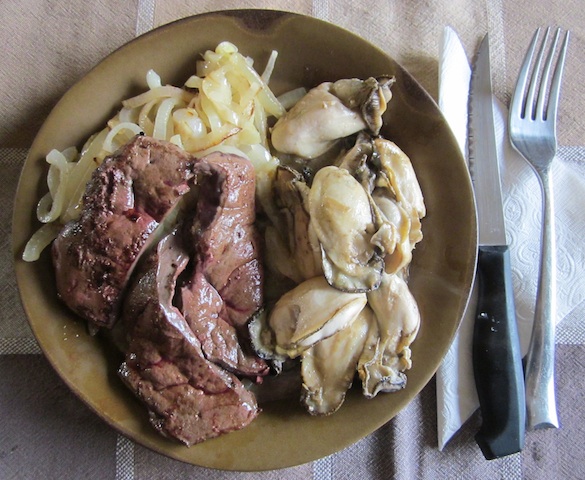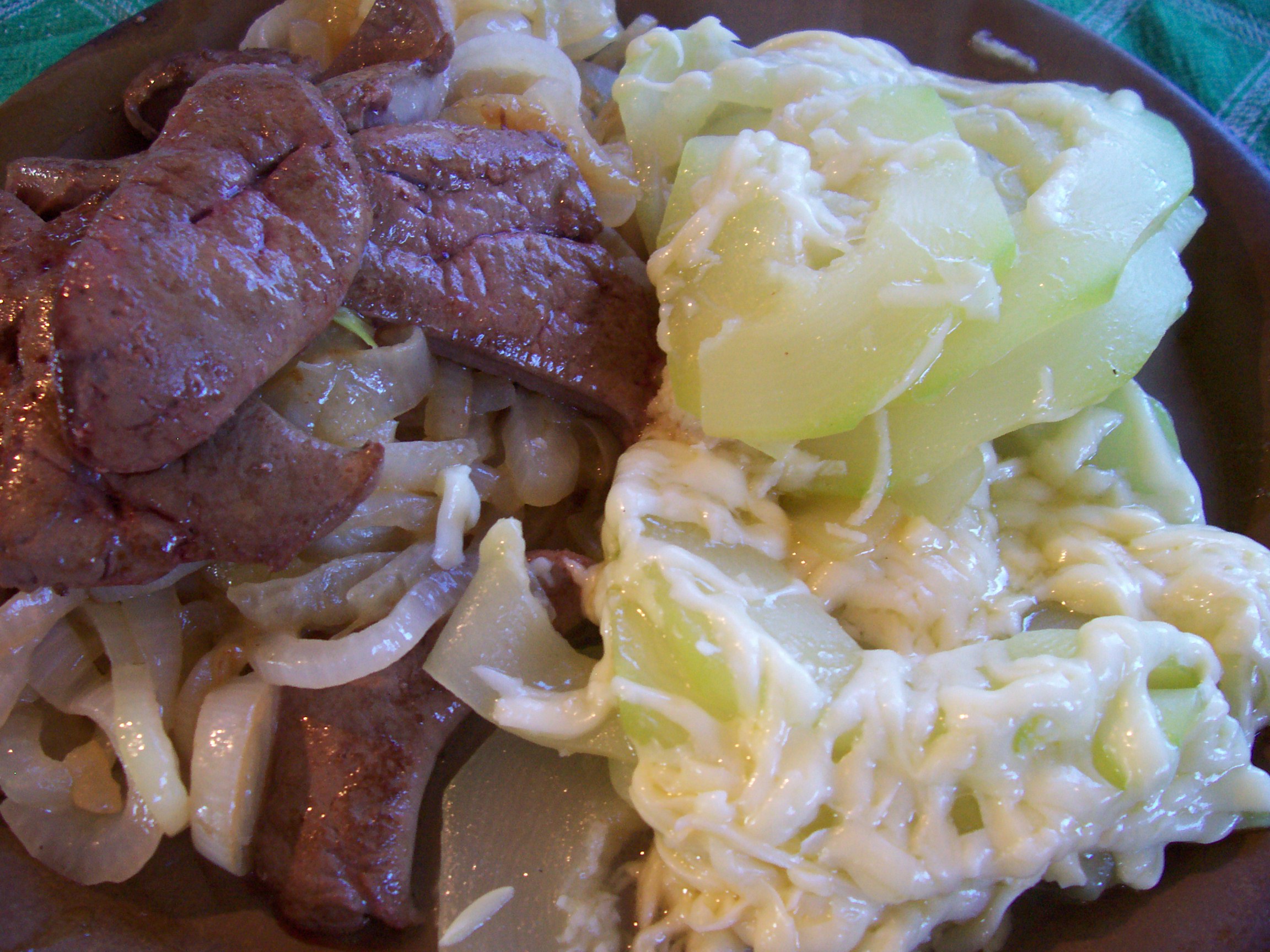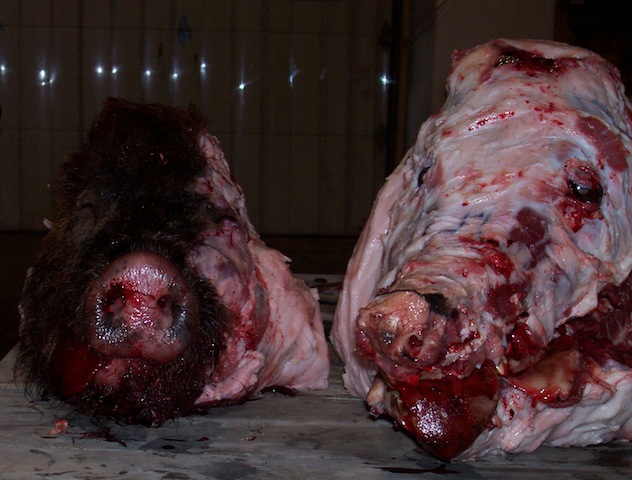
Here is a breakfast of liver and onions cooked in pastured lard. The oysters were lightly cooked in pastured butter. This breakfast packs a powerful nutritional punch and costs about $2.00 a plate. There is no reason eating nourishing traditional foods has to cost a fortune.
Liver and onions was once a common breakfast. Your grandparents would have eaten it once or twice a week, if they could get it. Now, many people are frightened by eating organ meats. I don’t know how many times I’ve heard someone say: “Aren’t those dangerous? Aren’t organs full of toxins?”Of course, I am thinking about liver from an animal that has lived its whole life on pasture and has never required medication. I don’t think I would like to eat the liver from an animal that had spent its whole life in a confinement operation, heavily medicated just to survive its very stressful, short life.
I would like to share my favorite liver and onions recipe. Please do not be frightened by organ meats. Just make sure the liver you are enjoying is from an animal that has lived a good life on pasture, and did not spend its last days gorging on grains. Organs are very nourishing foods. In fact, organs are superfoods. The secret to great liver is not to over cook.
1c calf liver, sliced thinly
1 large organic onion, cut in half, sliced thinly
2-3T organic butter
large pinch of sea salt
Slice the calf liver into thin 1/3 inch slices. Set aside for later. Saute in a cast iron pan the thinly sliced onions and sea salt in some of the butter until the onions are golden brown. Place the sauted onions on the serving plate and cover. Don’t let the cast iron pan get cold. Melt the remaining butter over medium high heat. Quickly put the slices of liver on the hot pan in one layer. As quickly as you can turn the liver slices over. Remove the liver slices from the pan onto the serving dish. Be quick about it. Cooking for 10 seconds a side is about right. The liver should be pink in the middle. Eat each piece of liver with the browned onions. Add a bit more sea salt if needed.
If you are feeling more adventurous after enjoying liver, please read Gourmet Organ Meat Recipes from the Weston A Price Foundation.


